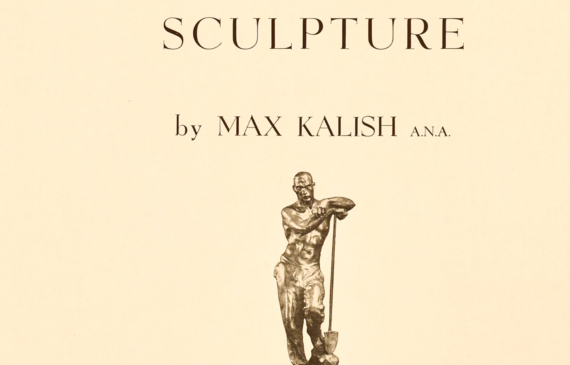
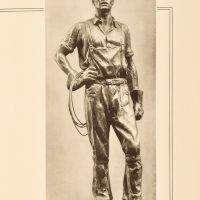
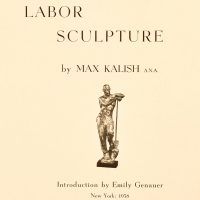
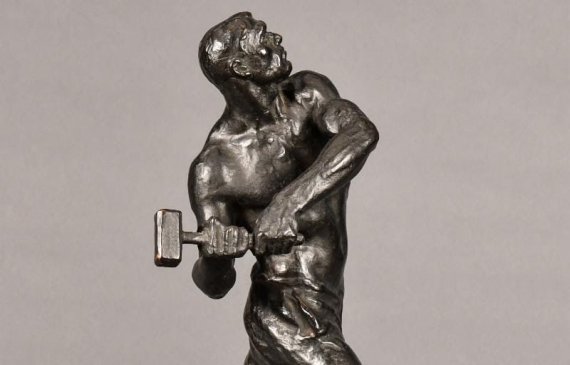
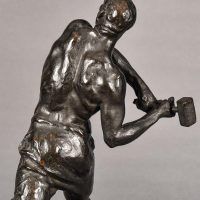
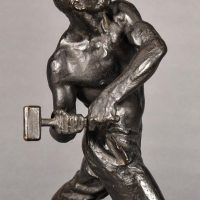
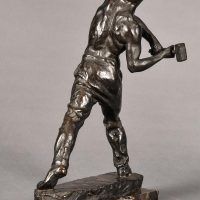
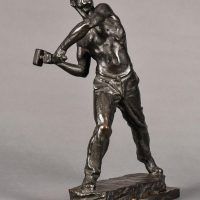
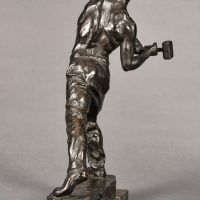
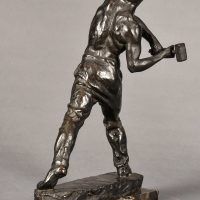
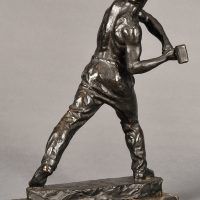
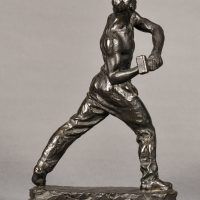
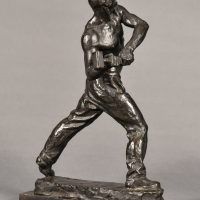
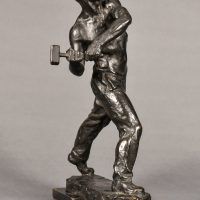
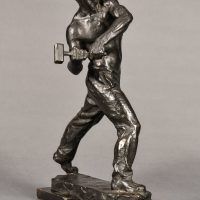
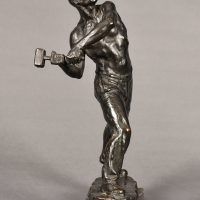
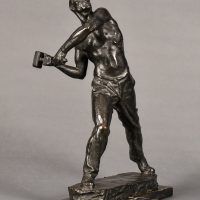
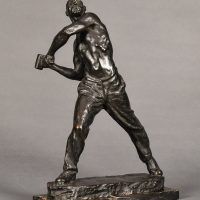
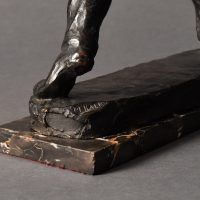

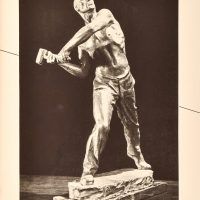
Max Kalish
American 1891–1945
Spiking Rail-Tie, c. 1930
Bronze, dark brown patina
15 ⅜ H. x 10 ¼ W. x 6 ½ D. inches
Signed on base: M KALISH
With original marble base
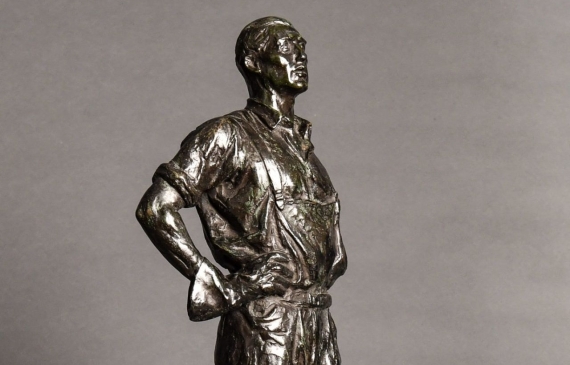
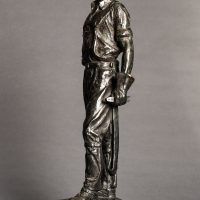
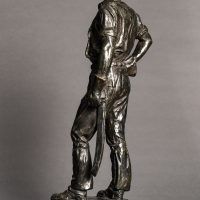
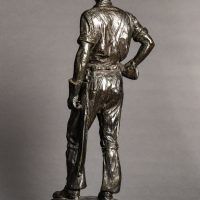
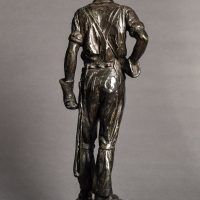
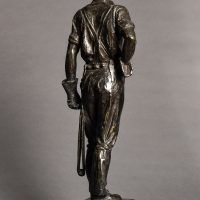
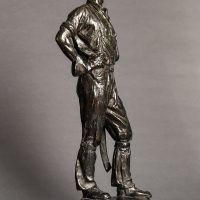
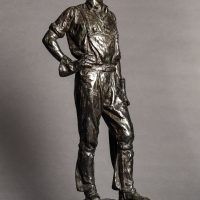
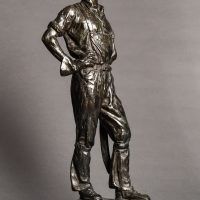
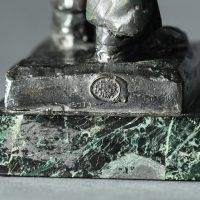


Max Kalish
American 1891–1945
Telephone Linesman, 1930
Bronze, dark green and black patina
17 ¾ H. x 6 ¾ W. x 6 ½ D. inches
Signed on base: M. Kalish / 1930
Stamped on base:
Meroni Radice / Cire Perdue / Paris
Mounted on original marble base, 1 ¼ Height
Max Kalish (March 1, 1891 – 1945) was American sculptor born in Valozhyn, Belarus, and best known for his sculptures of laborers. His Orthodox Jewish family emigrated to Cleveland, Ohio in 1893, when he was two years old.
He studied with Herman Matzen at the Cleveland School of Art; in New York City with Herbert Adams at the National Academy of Design, and in the studios of Alexander Stirling Calder and Isidore Konti; and in Paris with Paul Wayland Bartlett at the Académie Colorossi, and Jean Antoine Injalbert at the École des Beaux-Arts. His best known work is his 1932 statue of Abraham Lincoln in Cleveland, Ohio.
Washington, D.C. publisher Willard M. Kiplinger commissioned Kalish to create fifty portrait statuettes of prominent figures in World War II era politics, arts and sciences. Kiplinger donated the statuettes to the Smithsonian Institution in 1944.
Kalish was the author of Labor Sculpture, largely a collection of photographs of his statues of workers. Most of the works in the book are in a Social realism style. Critic Emily Genauer wrote in 1938, “It is the workmen who dominate the American scene, and who have become as surely symbolic of their time as the pioneers in covered wagons, and the robber barons and the great merchant princes were in there respective eras.” This was what Kalish portrayed in his art.